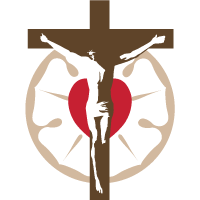by Mr. Jonathan Swett Each year, the Christian church embarks on a forty-day journey leading up to Easter, known as the season of Lent. When discussing Lenten liturgical practices of Lutherans, I believe one can distinguish three different categories into which each practice can be placed: Visual, Historical/Traditional, and Emotional/Spiritual. It can be debated; however,… Read More >
Smalcald Articles Study: The First and Chief Article
by Rev. Aaron Moldenhauer Throughout the Reformation, calls for a general council of the church to discuss religious issues were discussed and negotiated. One instance of these negotiations came in 1536, when Pope Paul III called for a council to begin in 1537. The Lutherans, wary of submitting themselves to a council that would be… Read More >
Albrecht Dürer’s “Knight, Death, and the Devil”
by Deac. Carolyn Brinkley Who is the Rider? Although Albrecht Dürer’s “Knight, Death, and the Devil” has been acclaimed as one of Europe’s greatest masterwork engravings since its publication in 1513, it has also been one of the most provocative pieces of art in the past 500 years. All agree that the copper engraving is… Read More >
Luther’s Invocavit Sermons, Part 3 – Faith and Love, Must and Free
by Rev. Anthony Dodgers In his eight Invocavit sermons, Martin Luther taught his congregation how they should first hear God’s Word and think of their actions in light of that Word. But he also taught them how they should think of their neighbor and what they should do to care for their fellow Christians. Luther… Read More >
Luther’s Invocavit Sermons, Part 2 – The Conscience & the Work of the Word
by Rev. Anthony Dodgers On Invocavit Sunday (the First Sunday in Lent), March 9, 1522, Martin Luther stepped into his pulpit in the City Church. His hair was no longer tonsured but he still wore the black cowl of the Augustinian friar. Over the course of that first week in Lent he preached a sermon… Read More >
Luther’s Invocavit Sermons, Part I – From the Wartburg to St. Mary’s Pulpit
by Rev. Anthony Dodgers On Invocavit Sunday (the First Sunday in Lent), 1522, Martin Luther began a series of eight short sermons in which he taught the people of Wittenberg how the reformation of the Church should be carried out. It must be based on God’s clear Word and it must care for the conscience… Read More >
Bible Study with Luther: Genesis 2
by Rev. Paul Doellinger A key teaching of the Reformation is Luther’s understanding of the three estates established and instituted by God: the church, the home, and the state.[1] Already before the fall into sin God established the Church and the home. With His Word God spoke His creation into existence. With that same creative… Read More >
Luther on the Transfiguration
by Rev. Stephen Preus To consider Christ’s glorious Transfiguration on its own is eye-opening; to hear how Luther describes this glory as yours nearly bursts the eyes from their sockets, bringing hope to the Christian heart. Luther’s use of the Transfiguration to teach the hope we have in the resurrection of the body is truly… Read More >
The Table of Duties
by Rev. A. Brian Flamme When Martin Luther prepared the text of the Small Catechism, he included a list of duties that people in various callings and stations in life have, as both a command and blessing from God. Some editions of the Small Catechism treat it as an appendix and do not print it,… Read More >
Lutherans and Roman Catholics Today
by Rev. Matthew Zickler If you were watching the newsfeed on or around October 31st last year, you perhaps saw Pope Francis celebrating the Reformation with officials of world Lutheran Churches in Lund, Sweden. There the pope made a great effort to extend a hand of rapprochement toward our Church tradition. In fact, even beyond desiring… Read More >
